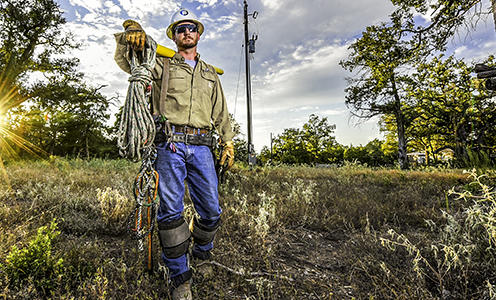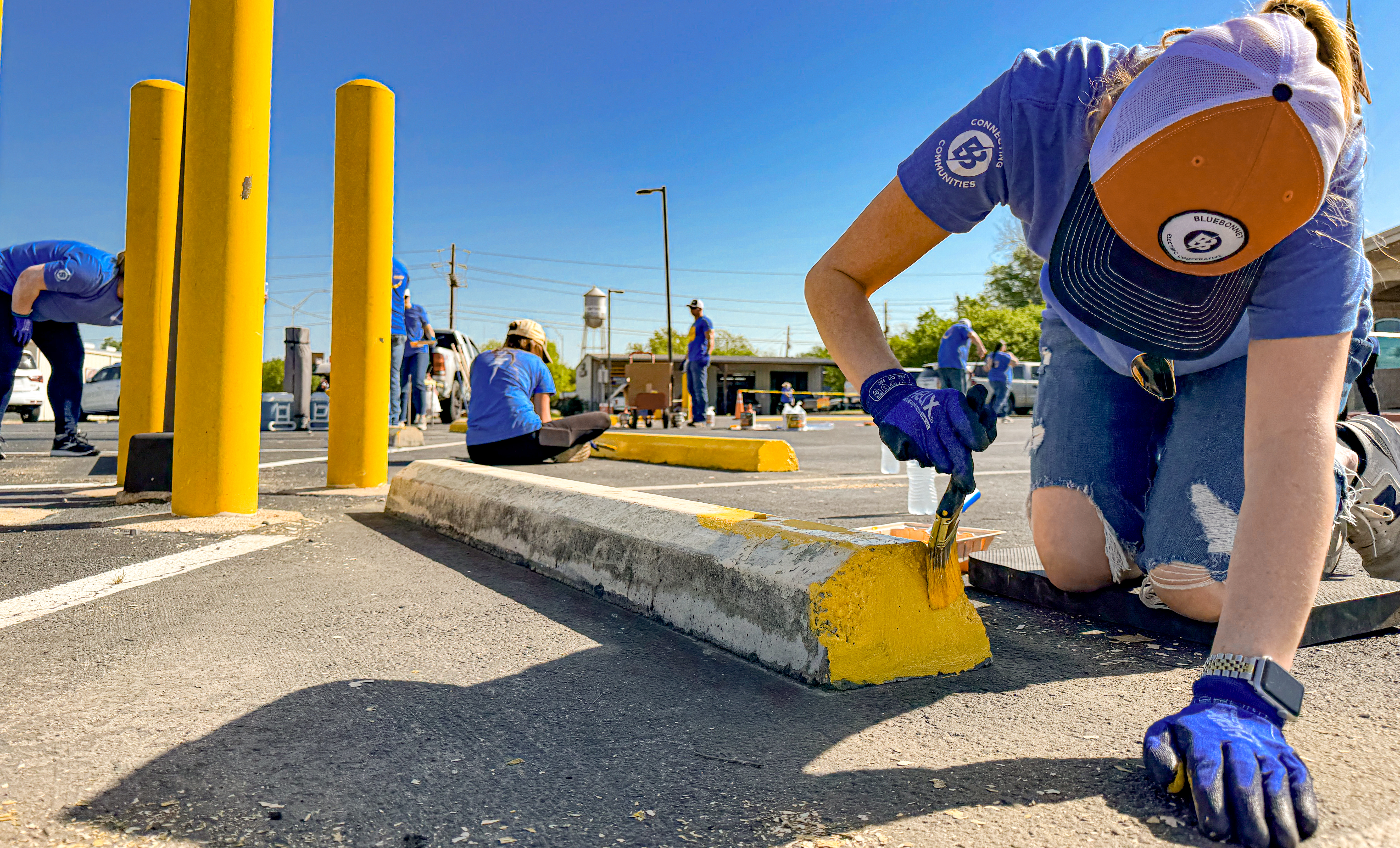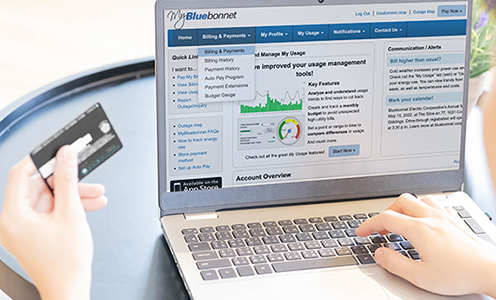The cooperative way
Recent news
Story by Pam LeBlanc
I start slowly, easing my foot onto the accelerator of a nimble white Miata at the first bend of a half-mile dirt track surrounded by sunflowers in rural Caldwell County.
Brianne Corn, buckled into the passenger seat, asked me what makes me nervous about driving a rally race car. I think about that for a second. I’m still panting slightly, after the high voltage, 3-minute ride I just took around the track as a passenger with Corn, a champion rally car driver and coach, at the wheel.
The engine had whined as we skidded through turns and kicked up a stampede’s worth of dust. Corn knew exactly how much gas to give her rocket ship of a car and where to point it. But me? Anytime the back end of a vehicle I’m driving loses its grip on the ground, bad things are bound to happen.
“I’m afraid I’ll spin out of control,” I told her.
But we’re driving on dirt, she pointed out, and the car is so low to the ground it’s nearly impossible to roll. Also, we’re going so slow that Corn’s sweet rescue dog Korben can run as fast as we’re moving. Besides, she told me, she’s only flipped a car once in 20 years, and even then, no one got injured.
I press a little harder on the gas. We zip through a corner. I tell her I want to kick up some dirt. I want to make this little car skid sideways, too.
“Look farther ahead,” she said. That advice, she added, applies in many aspects of life, not just driving. “The farther off you can see and plan, the better off you’ll be. If you’re looking right in front of you, your ability to influence what’s going to happen is almost nil.”
For a flicker of a moment, I feel what she’s talking about. I look way down the track, and things smooth out. Soon I’m moving fast enough to surf through some corners. It feels like I’m floating.
“I’m distracting you from yourself,” she said. “The most important thing is to get to a space where you’re confident. Then, like a lobster, I’ll turn up the heat a little bit at a time until you’re sliding around and you’re not scared.”
It turns out that coaching a race car driver is as much about psychology as it is mechanics. “I find I’m more of a sports psychologist than a driving instructor,” she said. “I’m always trying to figure out what’s going on with you.”
Corn, 53 and 6-foot-2, grew up in San Antonio. She was always intrigued by car racing, but not enough to devote her life to the sport. Driving fast came later.
Corn quit school as a teen but later earned a high school GED, and at age 21 enrolled at what is now Texas State University in San Marcos. During the final semester of a prolonged education in 2004, she studied abroad in Italy. One weekend, she and two friends headed out for a day trip, with Corn at the wheel of a Volkswagen Golf turbo diesel.
“We got lost in the mountains,” Corn said. “I pulled onto this road and four or five race cars pulled in behind us. I started speeding up.”
Corn’s passengers began to protest as she fell in behind the pack. “I think we were having a safety debate,” Corn said. “Eventually they quit talking. We were running at a pace not fast enough for the race cars, but not slow enough for my friends.”
When Corn finally pulled off on the side of the road, her hands shaking, she gathered her thoughts. “I kept thinking, ‘Am I crazy? Am I delusional? Or am I really good at this?’ I’d never raced a car before, but I think there’s something different about me.”
She wanted to drive — and fast. Just a month later, she drove in her first race. Corn graduated with a degree in photography and went to work running the donation center for the Hays-Caldwell Women’s Center. Later she returned to the university, working in the photography and multimedia departments for 17 years.
She started racing cars when she was 30. “Most people say if you don’t start at 12, you’re a has-been,” she said. “Racing was the one thing I felt compelled to do.”
Good eyesight helps (Corn has it), as does a background in riding dirt bikes or motorcycles. “I grew up with a big empty field and a lifetime supply of dirt bikes. My day care was a field and a motorcycle,” she said.
Today she lives in an RV next to the half-mile Brianne Corn racetrack she built 10 years ago as a practice track in Maxwell, 11 miles east of San Marcos. More than 50 cars, some of them stripped down, are parked around the property, and an assortment of vehicles, tools and knickknacks occupy every square inch of a warehouse.
“I am not a car person as much as I’m a driver,” she said. “I love to drive.”
What sets certain drivers apart, she says, is their mental fortitude and ability to quickly recover. Really good drivers don’t implode if they make a mistake.
Corn has proved that over and over. She set a land speed racing record — traveling 86 mph — on a 1948 Triumph motorcycle at the Bonneville Salt Flats in Utah in 2008.
In 2011, she became only the second woman in 83 years to win a class (in this case the AWD Time Attack) at the Pikes Peak International Hill Climb in Colorado. That same year, she won the modified open class at the SCCA Solo National Championship, became the Rally America Open Light Shootout Champion, and was named the Sports Car Club of America’s Driver of the Year. She also navigated for a driver in a Class C truck at the Baja 1000 in Mexico, the world’s longest point-to-point car race, but the vehicle broke down and her team dropped out.
A slew of accolades has followed. In all, Corn has won four SCCA rally car championships. But those wins don’t bring big bucks.
She’s largely self-taught. Over the years, Corn has purchased dozens of old cars off Craigslist.org, and taught herself how to maintain them: “If there was a Subaru for less than 500 dollars, I ate bread and water and bought it to use for parts.”
She once removed the radio from one of her race cars and tucked a copy of Douglas Adam’s “The Hitchhiker’s Guide to the Galaxy” in the empty space. When she races, she uses number 42, which was, in that book, the answer to “the ultimate question of life, the universe, and everything.”
And she still loves to go fast. “It is one of the favorite things in my life. Driving a vehicle that is pointing in a different direction than it is traveling is a very special place for me,” she said.
Today she co-races with Peter Dozeman, a Phoenix-based driver she met at a race in California three and a half years ago. When she saw a Miata he owned, she knew she’d be unstoppable in it. “I turned to him and said, ‘I’d like to be your co-driver.”
Corn and her brother Kevin Corn produce the Lone Star Rallycross series of races, hosting monthly events at her racetrack in Maxwell.
One at a time, cars weave through cones set up on the track for time. To race at the track, a car must be in good working order. It can’t be taller than it is wide. Other than that, she said, “there are no rules, just guidelines.”
Corn teaches drivers to race — and teenagers to drive defensively — too. She believes new drivers should experience skids and swerves in a controlled environment, like her track, so they can handle those threats when they happen unexpectedly on a public road.
As for me, I’m getting plenty of thrills. And something has happened inside my head. The wanna-go-fast voice is out-shouting the this-speed-is-freaking-me-out one. With Corn at my side, egging me (safely) on, I’m revving the engine and swooshing through the zigzagging dirt runway.
This day at the track has given me more than some new driving skills — it’s given me a confidence upgrade.
Download this story as it appeared in the Texas Co-op Power magazine »
The Ellinger Chamber of Commerce will make significant improvements to the Ellinger Community Center, thanks to a $21,315 grant from the Lower Colorado River Authority and Bluebonnet Electric Cooperative.
The grant, along with $9,135 in matching funds from the Chamber, will allow for purchase of a walk-in cooler for food storage, HVAC unit and additional duct work.
“Our large event hall takes a lot to air-condition,” said Michael Schlabach, Ellinger Chamber of Commerce president. “With this grant, we get to improve the temperature control in the dining hall, which will make things much more comfortable for everyone, especially our older generation.”
Built in 1935, the center offers an affordable location for family reunions, weddings, trainings, church services and other events. The center has served generations of Ellinger residents.
“It has hosted local church feasts, fundraisers for the fire department and weddings,” Schlabach said. “Great-grandmothers who were married in this building see their great-grandchildren getting married here.”
The center also serves as an important venue for residents to give back to the community. Each year, volunteers make over 200 gallons of chicken noodle soup in the center’s kitchen as part of a fundraising event. The walk-in cooler will improve food safety and the working environment for volunteers.
“One thing I’m very proud of is that our center teaches children the act of volunteering – learning to do physical labor and that what you gain from it is pride in seeing what you’ve done for the community,” Schlabach said. “As a community center, we try to always keep growing so they see what they’ve contributed and can say ‘I did that. I helped with that.’
“It’s great when you have somebody as small as us getting help from someone as large as LCRA and Bluebonnet,” Schlabach said. “It shows how we all work together – how LCRA and Bluebonnet give back and how we give back. We only have about 300 residents here and we have one of the finest halls in the area. It shows that when people take pride in something, work hard and don’t look out for just themselves but instead look out for their community, they can make a very big difference.”
The community grant is one of five grants being awarded by Bluebonnet and the LCRA through LCRA’s Community Development Partnership Program, which helps volunteer fire departments, local governments, emergency responders and nonprofit organizations fund capital improvement projects in LCRA’s wholesale electric, water and transmission service areas. The program is part of LCRA’s effort to give back to the communities it serves. Bluebonnet Electric Cooperative is one of LCRA’s wholesale electric customers and is a partner in the grant program.
Applications for the next round of grants will be accepted in January. More information is available at lcra.org/cdpp.
By Alyssa Dussetschleger
This year, Bluebonnet’s Solar Day wasn’t just about solar panels. The live webinar included information on electric innovations in battery storage and vehicles, too.
The sixth annual event, on Oct. 16 this year, showcased a presentation from Micah Jasuta of the Texas Solar Energy Society; information and ideas from Bluebonnet Electric Cooperative members Aaron Contreras, John White and Jeff Nelson; and a Q&A about the installation and benefits of solar power systems and battery storage.
If you couldn’t join us online that day, watch the recording at bluebonnet.coop/solar. Here are our top 6 takeaways from the day:
1. When you’re ready to choose a solar power system installer, the U.S. Department of Energy recommends you get at least three bid proposals. Be skeptical and ask questions of installers before you choose. Talk to friends and family with solar panels, search the business member page at TXSES.org, and read review websites like the Better Business Bureau, Yelp, solarreviews.com and North America’s board of energy practitioners at nabcep.org. It’s a good idea to ask an installer if they are certified by the North American Board of Certified Energy Practitioners. Don’t just go by star ratings, either. Read the comments and reviews.
2. Research battery storage options that suit the solar energy you produce. A battery’s storage capacity determines how long it can power parts of your home. Common energy capacity ranges from 5 to 15 kilowatts. Battery storage can provide a lot of power in a short time or less power over a long time. Apps and online portals can help you monitor your solar production to maximize its use throughout the day.
3. Bluebonnet inspects your solar array to ensure it is safe before we connect it to our electric grid. You’ll be put on the cooperative’s distributed generation rate and get paid for overproduction, which is when you produce more power than you are using and the excess is returned to the cooperative’s grid.
4. Battery storage can save your overproduction of electricity for use when the sun isn’t shining or during a power outage. Place your battery backup near your breaker panel or in the garage to protect it from the elements. Depending on the brand and size of your battery storage, it may hold enough power to charge all or part of your home from one to seven days.
5. The federal Solar Investment Tax Credit remains at 26% through the end of 2022. It’s a credit that can be claimed on your federal income taxes for a percentage of the money you paid to install a solar array. The credit is available in every state and is scheduled to decrease to 22% in 2023.
6. Thinking about an electric vehicle? Consider your driving habits and distances. Avoid “range anxiety” by charging up your vehicle before the power level gets low.
Download this story as it appeared in the Texas Co-op Power magazine »





